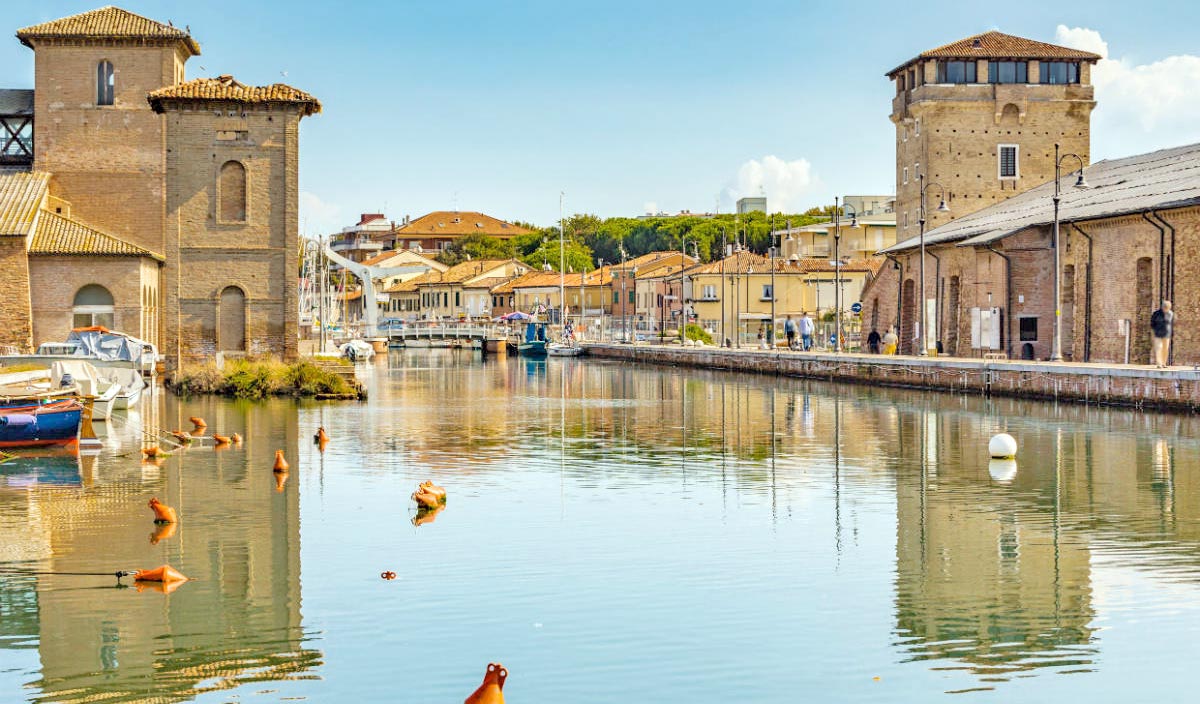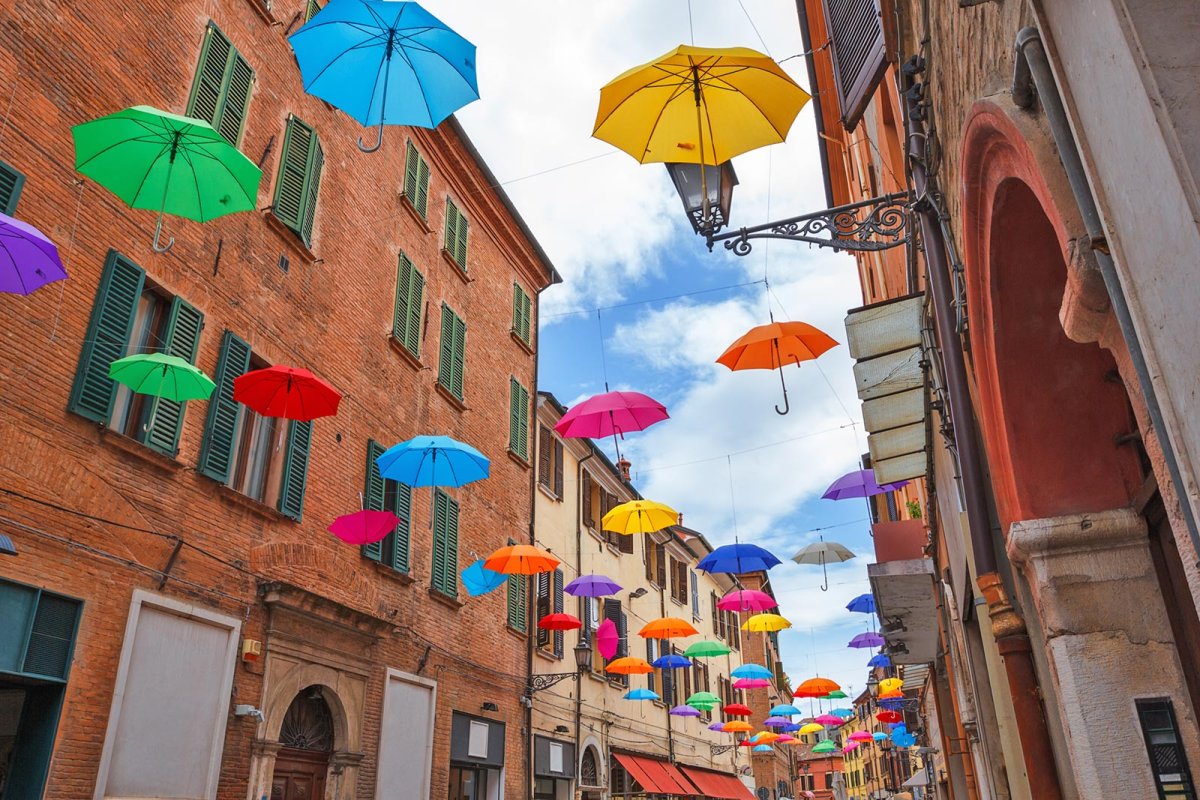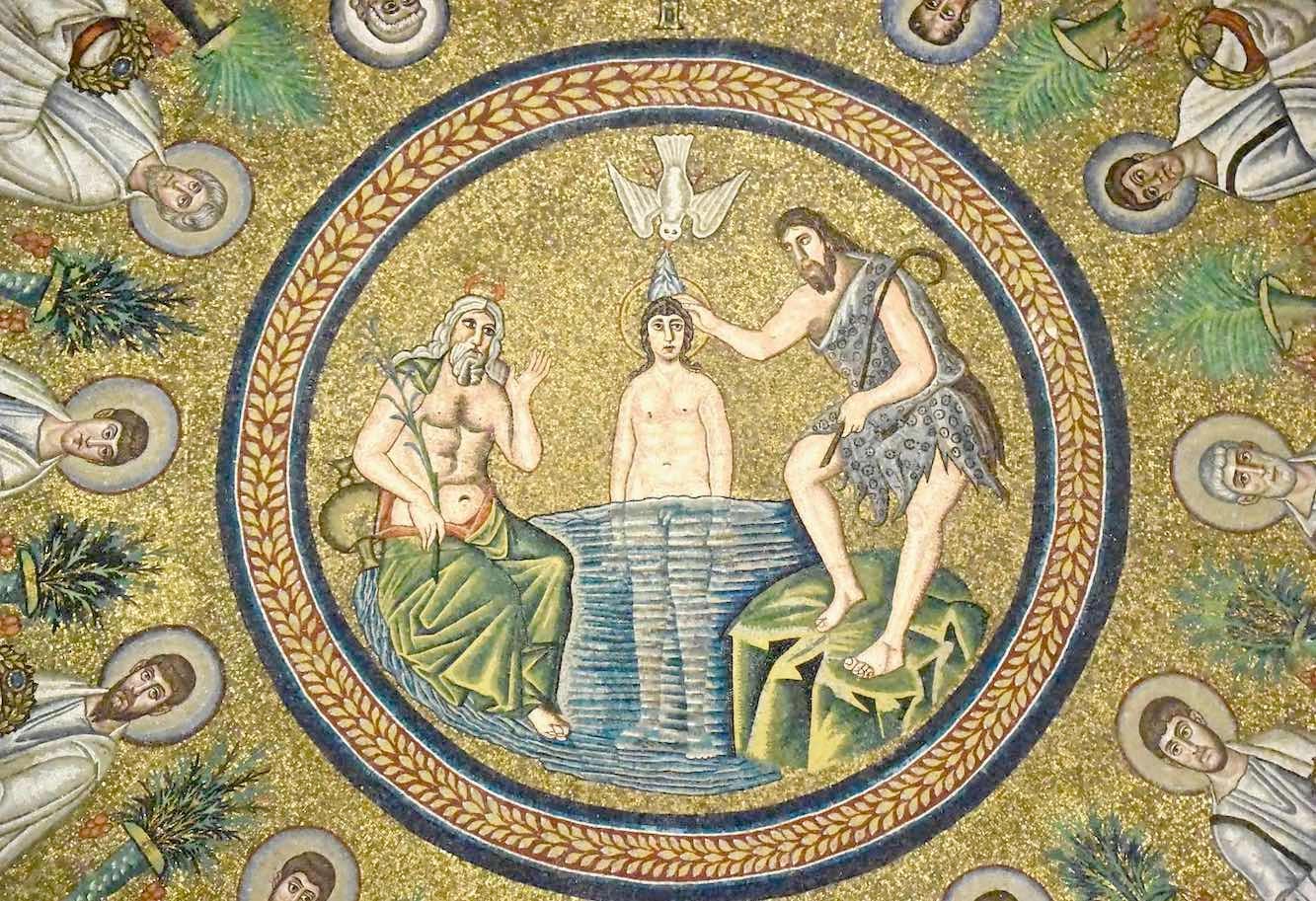Art and history in Comacchio and the Po Delta
An ancient territory rich in historical monuments and museums
Comacchio is a town deeply linked to the morphological and hydrological changes of the territory and the first settlements of an Etruscan population date back to the sixth century BC when the town of Spina was founded. At that time Comacchio did not exist yet but it was already the fulcrum of commercial exchanges by sea with Greek populations: in fact, many are the Greek and Etruscan artifacts found in the territory.
The "village" of Comacchio originated around the VII/VIII century A.D. and was able to expand thanks to the enormous natural wealth of the territory: fish, sea and salt pans.
The presence of these riches has shown the interest of several neighboring populations that have dominated these territories for years such as the Lombards, the Papal States and the Este family. Just in these years we owe the construction of important sites, such as the religious center of Santa Maria Regia, the cathedral of San Cassiano, the prisons and the Torre del Capitano in Magnavacca.
The city, as we know it now, was born in about 1630 and at the behest of the cardinals was immediately built an outlet to the sea: the port of Magnavacca and the grand Trepponti, which became the symbol of the iconic lagoon city. To this period we owe the construction of most of the stone bridges and the Cappuccini colonnade.
The Valleys of Comacchio have always represented the main resource of the local economy and their management was always at the center of historical events.
In 1797 Napoleon took possession of the town and the Valleys but the citizens rebelled and led by Antonio Buonafede and Guido Manfrini managed to obtain the signing of the Giletti Deed (July 12, 1797) with which the French Republic sold the Valleys to the citizens.
We cannot forget Garibaldi who in 1849 landed in Magnavacca, later called Portogaribaldi, with his dying wife Anita. The comacchiesi gave them refuge, the hut of Garibaldi present at the Lido delle Nazioni is the testimony, until Anita died in Mandriole.
In the following period and precisely in 1865, began the reclamation of the Valleys with the drainage of about 20,000 hectares to continue in 1913 with another 8,000 hectares. The last reclamations date back to the sixties with the Mezzano about 18,000 hectares.
Today there are about 13,500 hectares in the valley while more than 60,000 hectares have been drained.
From this moment the economy has changed radically and next to fishing, over the years has taken place in agriculture and finally tourism, with the birth of the Seven Lidi of Comacchio.
The "village" of Comacchio originated around the VII/VIII century A.D. and was able to expand thanks to the enormous natural wealth of the territory: fish, sea and salt pans.
The presence of these riches has shown the interest of several neighboring populations that have dominated these territories for years such as the Lombards, the Papal States and the Este family. Just in these years we owe the construction of important sites, such as the religious center of Santa Maria Regia, the cathedral of San Cassiano, the prisons and the Torre del Capitano in Magnavacca.
The city, as we know it now, was born in about 1630 and at the behest of the cardinals was immediately built an outlet to the sea: the port of Magnavacca and the grand Trepponti, which became the symbol of the iconic lagoon city. To this period we owe the construction of most of the stone bridges and the Cappuccini colonnade.
The Valleys of Comacchio have always represented the main resource of the local economy and their management was always at the center of historical events.
In 1797 Napoleon took possession of the town and the Valleys but the citizens rebelled and led by Antonio Buonafede and Guido Manfrini managed to obtain the signing of the Giletti Deed (July 12, 1797) with which the French Republic sold the Valleys to the citizens.
We cannot forget Garibaldi who in 1849 landed in Magnavacca, later called Portogaribaldi, with his dying wife Anita. The comacchiesi gave them refuge, the hut of Garibaldi present at the Lido delle Nazioni is the testimony, until Anita died in Mandriole.
In the following period and precisely in 1865, began the reclamation of the Valleys with the drainage of about 20,000 hectares to continue in 1913 with another 8,000 hectares. The last reclamations date back to the sixties with the Mezzano about 18,000 hectares.
Today there are about 13,500 hectares in the valley while more than 60,000 hectares have been drained.
From this moment the economy has changed radically and next to fishing, over the years has taken place in agriculture and finally tourism, with the birth of the Seven Lidi of Comacchio.
In Comacchio there are three important museums: Delta Antico, Manifattura dei Marinati and Remo Brindisi.
The Delta Antico museum was inaugurated on March 25, 2017 inside the Ospedale degli Infermi, which was in operation until 1811 but then completely renovated for the occasion.
The museum is arranged on two floors and the path starts from the Roman age with the exhibition of artifacts related to the economic activities of the time such as agriculture, fishing, breeding, production of ceramics and later coins.
Continuing on, it is possible to admire the "load of the Roman ship" discovered in 1981 during some maintenance works of the drainage canals. The ship, 21 meters long and probably wrecked, was complete with all its cargo in excellent condition, amphorae, cups, glasses, small temples and lead ingots.
Going up to the second floor there is the oldest section reserved for Spina and its necropolis where you can find finds of the Etruscan city from its birth to its disappearance.
The Remo Brindisi Museum is a modern architecture immersed in the green of Lido di Spina, realized at the beginning of the 70's by the architect Nanda Vigo, following the will of the master Remo Brindisi (1918 - 1996).
The museum was inaugurated in 1973 with two aims: to be a home for summer vacations and a museum to house the precious collection of works that belonged to the master Brindisi.
The collection now boasts more than two thousand works representative of national and international artistic expressions of the twentieth century.
Pablo Picasso, Andy Warhol, Mimmo Rotella, Lucio Fontana, Mario Schifano, Piero Manzoni, Francis Bacon, Medardo Rosso, Emilio Vedova, Giorgio De Chirico, Alberto Savinio, Giò Pomodoro, Henry Moore, Arturo Martini, Filippo De Pisis, Emilio Greco, Virgilio Guidi, Ottone Rosai, Mario Sironi, Hans Arp, Ladislas Kijno, Antonio Corpora, Agostino Bonalumi, just some of the artists housed inside.
Today, thanks to Master Brindisi's will, the whole collection and the House Museum are owned by the Municipality of Comacchio and can be visited upon reservation.
The Manifattura dei Marinati is a factory that is active at certain times of the year and at the same time a museum that tells the story of a characteristic element of the town of Comacchio: fishing and the processing of eels.
The complex has been completely renovated and the sala dei fuochi, with its 12 fireplaces, is the place where eels were roasted to be marinated in milk and vinegar.
Here is also the room of the vinegars with barrels and vats for the preservation of the precious condiment.
The Delta Antico museum was inaugurated on March 25, 2017 inside the Ospedale degli Infermi, which was in operation until 1811 but then completely renovated for the occasion.
The museum is arranged on two floors and the path starts from the Roman age with the exhibition of artifacts related to the economic activities of the time such as agriculture, fishing, breeding, production of ceramics and later coins.
Continuing on, it is possible to admire the "load of the Roman ship" discovered in 1981 during some maintenance works of the drainage canals. The ship, 21 meters long and probably wrecked, was complete with all its cargo in excellent condition, amphorae, cups, glasses, small temples and lead ingots.
Going up to the second floor there is the oldest section reserved for Spina and its necropolis where you can find finds of the Etruscan city from its birth to its disappearance.
The Remo Brindisi Museum is a modern architecture immersed in the green of Lido di Spina, realized at the beginning of the 70's by the architect Nanda Vigo, following the will of the master Remo Brindisi (1918 - 1996).
The museum was inaugurated in 1973 with two aims: to be a home for summer vacations and a museum to house the precious collection of works that belonged to the master Brindisi.
The collection now boasts more than two thousand works representative of national and international artistic expressions of the twentieth century.
Pablo Picasso, Andy Warhol, Mimmo Rotella, Lucio Fontana, Mario Schifano, Piero Manzoni, Francis Bacon, Medardo Rosso, Emilio Vedova, Giorgio De Chirico, Alberto Savinio, Giò Pomodoro, Henry Moore, Arturo Martini, Filippo De Pisis, Emilio Greco, Virgilio Guidi, Ottone Rosai, Mario Sironi, Hans Arp, Ladislas Kijno, Antonio Corpora, Agostino Bonalumi, just some of the artists housed inside.
Today, thanks to Master Brindisi's will, the whole collection and the House Museum are owned by the Municipality of Comacchio and can be visited upon reservation.
The Manifattura dei Marinati is a factory that is active at certain times of the year and at the same time a museum that tells the story of a characteristic element of the town of Comacchio: fishing and the processing of eels.
The complex has been completely renovated and the sala dei fuochi, with its 12 fireplaces, is the place where eels were roasted to be marinated in milk and vinegar.
Here is also the room of the vinegars with barrels and vats for the preservation of the precious condiment.
Don't miss also the articles of our Blog
Insights on food, art and nature in Comacchio.
Read all articles Live a unique vacation experience
Un viaggio nel territorio dei Sette Lidi di Comacchio.
Book an experience 


